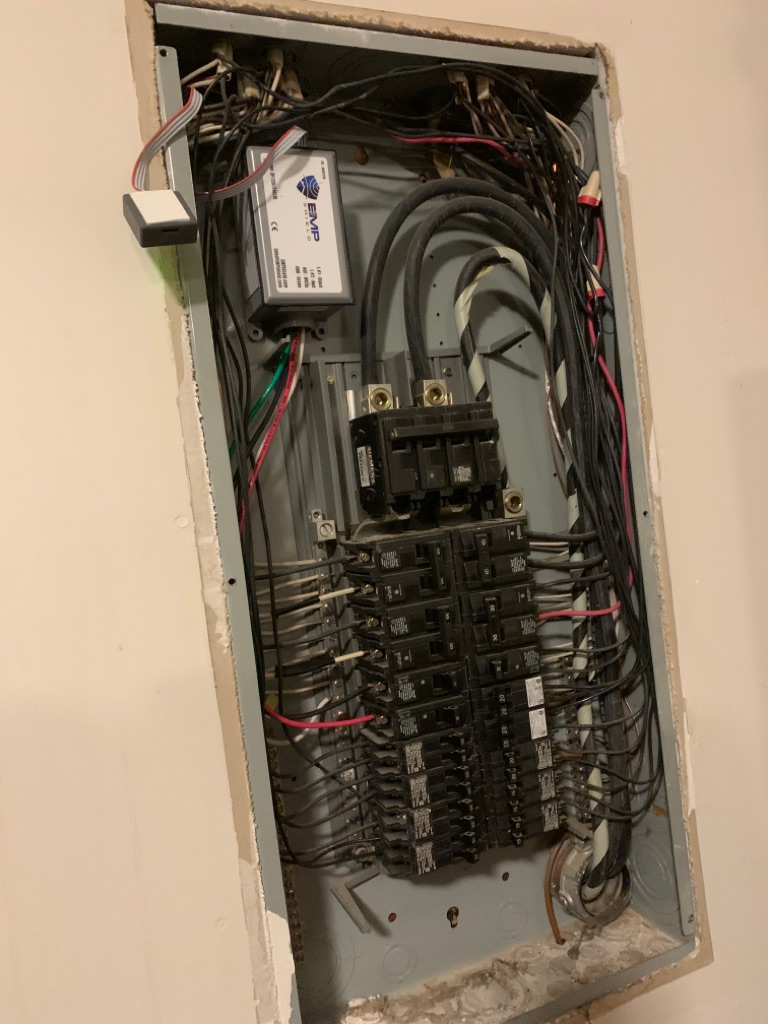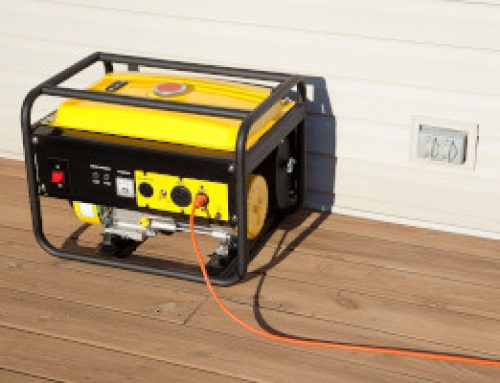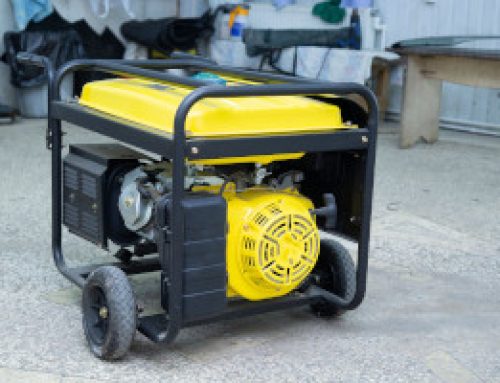One unexpected power surge can damage every device in your home.
Are you protected?
Most homeowners think about surge protection only after it’s too late—when a lightning strike or power grid fluctuation has already fried their electronics. But with the average American home containing over $15,000 worth of electronic devices and smart systems, surge protection has never been more critical.
While most people are familiar with plug-in surge strips, whole-home surge protectors offer a different level of protection that covers your entire electrical system.
Understanding the advantages and drawbacks of whole-home surge protection helps you make informed decisions about protecting your home’s electrical infrastructure.
What Is a Whole-Home Surge Protector?
A whole-home surge protector is a device installed at your main electrical panel that monitors incoming electrical current and diverts excess voltage away from your home’s wiring system.
When the device detects voltage levels above normal operating ranges, typically around 120-240 volts, depending on your electrical system, it redirects the excess energy safely to the ground.
The key difference between whole-home protectors and plug-in surge strips lies in their scope and installation location. Plug-in surge strips protect only the devices plugged directly into them and are installed at individual outlets.
Whole-home surge protectors, installed at the main electrical panel, provide protection for every circuit in your house, including hardwired appliances, lighting systems, and outlets throughout the home.
Whole-home surge protectors work by using metal oxide varistors (MOVs) or gas discharge tubes that act as electrical pressure relief valves. Under normal conditions, these components don’t interfere with electrical flow.
When voltage exceeds safe levels, they activate within nanoseconds, creating a path for excess electricity to flow harmlessly to ground rather than continuing into your home’s wiring.

7 Advantages of Whole-Home Surge Protectors
1. Protects All Electrical Devices in Your Home
The most significant advantage of whole-home surge protection is comprehensive coverage.
One device installed at your electrical panel protects everything connected to your home’s electrical system, from major appliances like refrigerators and HVAC systems to smaller electronics like smart speakers and phone chargers.
This comprehensive protection extends to hardwired devices that can’t be protected by plug-in surge strips, including ceiling fans, garage door openers, built-in appliances, and electrical systems like security panels and smart home hubs.
Without whole-home protection, these permanently installed devices remain vulnerable to surge damage.
2. Can Be Integrated with Other Home Electrical Upgrades
Whole-home surge protectors integrate seamlessly with other electrical improvements, making them cost-effective additions during major electrical work.
When upgrading electrical panels, installing solar power systems, or adding backup generators, surge protectors can be included as part of the overall project, often reducing installation costs.
This integration approach is particularly beneficial because electrical contractors are already working at the main panel, eliminating the need for separate service calls and permitting processes.
The timing also ensures that new electrical investments receive protection from the moment they’re installed.
3. Improves Appliance and Electronics Lifespan
Power surges don’t always cause immediate, obvious damage. Many surges are small and frequent, gradually degrading electronic components over time. These “micro-surges” can shorten the lifespan of appliances and electronics by causing cumulative damage to sensitive circuitry.
Whole-home surge protectors help prevent this gradual deterioration by maintaining consistent voltage levels throughout your electrical system.
This protection can extend the useful life of expensive appliances like refrigerators, washing machines, and HVAC systems, potentially saving thousands of dollars in premature replacement costs.
4. Reduces Risk of Electrical Fires
Sudden voltage spikes can cause wiring and electrical components to overheat, potentially leading to electrical fires. Whole-home surge protectors help prevent these dangerous conditions by limiting voltage to safe levels before it reaches your home’s wiring system.
This fire prevention benefit is particularly important in older homes where wiring may be more susceptible to damage from voltage fluctuations.
By maintaining electrical stability, surge protectors contribute to overall home safety beyond just protecting electronic devices.
5. Works Automatically
Unlike plug-in surge strips that require manual connection and can be forgotten or bypassed, whole-home surge protectors operate automatically and continuously. Once installed, they provide protection 24/7 without any action required from homeowners.
This automatic operation ensures protection even when you’re away from home or asleep. There’s no risk of forgetting to plug important devices into surge strips or accidentally using unprotected outlets during emergencies or power outages.
6. Enhances Home Safety During Storms or Blackouts
Areas prone to severe weather, frequent power outages, or unstable electrical grids benefit significantly from whole-home surge protection. Lightning strikes, downed power lines, and grid switching operations can all cause damaging voltage spikes that affect entire neighborhoods.
During storm seasons, whole-home surge protectors provide peace of mind by ensuring that power restoration after outages doesn’t damage your electronics.
Power companies sometimes experience voltage fluctuations when bringing systems back online, making surge protection particularly valuable during recovery periods.
7. May Add Value to Your Home or Insurance Discounts
Whole-home surge protectors are increasingly viewed as valuable home safety upgrades, similar to security systems or smoke detectors. Some insurance companies offer discounts on homeowners’ policies for homes with whole-home surge protection, recognizing the reduced risk of electrical damage claims.
When selling your home, surge protection can be a selling point for buyers who understand the value of protecting their electronic investments.
The installation also demonstrates proactive home maintenance and attention to electrical safety.
7 Drawbacks of Whole-Home Surge Protectors
1. Upfront Installation Cost
The initial investment for whole-home surge protection typically ranges from $300 to $700, including equipment and professional installation.
This upfront cost can be significant for homeowners on tight budgets, especially when compared to the lower cost of individual plug-in surge strips.
However, when viewed as insurance against potentially thousands of dollars in electronic device replacement costs, many homeowners find the investment worthwhile. The cost becomes even more reasonable when installation is combined with other electrical work.
2. Potential Compatibility Issues with Older Electrical Systems
Homes with outdated electrical systems may face challenges when installing whole-home surge protectors. Older panels, inadequate grounding systems, or obsolete wiring configurations can prevent proper installation or reduce the effectiveness of surge protection.
These compatibility issues may require additional electrical upgrades before surge protector installation, increasing the overall project cost. In some cases, the electrical improvements needed to support surge protection may cost more than the surge protector itself.
3. Lifespan Is Limited
Whole-home surge protectors don’t last forever. Most devices need replacement every 5-10 years, depending on the frequency and severity of surge events they handle.
Each time a surge protector operates, it absorbs some of the excess energy, gradually reducing its capacity to handle future surges.
Many modern surge protectors include indicator lights or alarms that signal when replacement is needed, but homeowners must remember to monitor these indicators and schedule replacement service. The ongoing replacement costs should be factored into the long-term value calculation.
4. Doesn’t Replace Plug-in Surge Strips for Sensitive Devices
While whole-home surge protectors provide excellent primary protection, they may not offer sufficient protection for extremely sensitive electronics like computers, gaming systems, and high-end audio equipment.
These devices often benefit from additional protection provided by high-quality plug-in surge strips.
This layered protection approach means that homeowners may still need to invest in individual surge strips for their most valuable or sensitive electronics, adding to the overall cost of comprehensive surge protection.
5. Installation Requires a Licensed Electrician
Whole-home surge protectors must be installed by licensed electricians due to the complexity and safety requirements of working with main electrical panels.
This professional installation requirement adds to the cost and means homeowners can’t complete the installation as a DIY project.
Improper installation can create serious safety hazards, including electrical fires or electrocution risks. The need for professional installation also means coordinating with contractors and potentially waiting for available appointment times.
6. May Be Ineffective in Poorly Grounded Homes
Surge protectors rely on proper electrical grounding to function effectively. Homes with inadequate grounding systems may not receive full protection benefits, as the surge protector needs a safe path to direct excess electricity away from the home’s wiring.
Grounding system problems are common in older homes and may require significant electrical work to correct. Without proper grounding, surge protectors may provide little to no protection, making the investment ineffective.
7. Limited Warranty and Coverage
While many surge protectors come with warranties that promise to cover connected equipment damage, these warranties often have restrictive terms and conditions.
Coverage limits may be lower than the actual value of damaged equipment, and claims processes can be complex and time-consuming.
Many warranties require product registration, proper installation documentation, and proof that the surge protector was the only protection device connected during the surge event. These requirements can make warranty claims difficult to pursue successfully.
Is a Whole-Home Surge Protector Right for Your Home?
Determining whether whole-home surge protection makes sense for your situation depends on several factors related to your home, location, and electronics usage.
Ideal Candidates for Whole-Home Surge Protection
Homes with extensive electronics and smart systems benefit most from whole-home surge protection. If your house includes smart thermostats, security systems, home automation, multiple computers, gaming systems, and modern appliances, the potential cost of surge damage makes protection worthwhile.
Areas prone to severe weather, frequent power outages, or electrical grid instability also make strong candidates for whole-home surge protection.
Regions with frequent lightning storms, aging electrical infrastructure, or industrial facilities that can cause power fluctuations see more surge events that justify the protection investment.
Homeowners planning other electrical upgrades should strongly consider adding surge protection to their projects. The combined installation can reduce overall costs while ensuring new electrical investments receive immediate protection.
Situations Where Whole-Home Surge Protection Is Less Critical
Minimalist homes with few electronics or small apartments with limited electrical systems may not justify the investment in whole-home surge protection.
If your total electronics value is less than the cost of surge protector installation, plug-in surge strips may provide adequate protection at a lower cost.
Newer homes sometimes include built-in surge protection as part of their electrical systems. Check with your builder or electrician to determine if your home already has surge protection before investing in additional equipment.
Rental properties present another consideration, as tenants typically can’t authorize electrical modifications, and landlords may not see immediate value in surge protection investments.
Getting a Professional Assessment
The best way to determine if whole-home surge protection makes sense for your situation is through a professional electrical assessment. Qualified electricians can evaluate your electrical system, discuss your protection needs, and recommend appropriate whole-home surge protector types based on your specific circumstances.
Professional assessment also identifies any electrical system issues that might affect surge protector installation or effectiveness, helping you make informed decisions about necessary upgrades.
Frequently Asked Questions
Shield Your Home, The Smart Way
Whole-home surge protectors offer comprehensive electrical protection but come with both significant benefits and important limitations. The decision to install surge protection should be based on careful consideration of your home’s electronics value, local electrical conditions, and budget constraints.
Ready to protect your home’s power system?
Contact a qualified electrician for expert evaluation and installation of whole-home surge protectors in Lafayette, IN, to ensure your electronics and appliances receive the protection they need.


